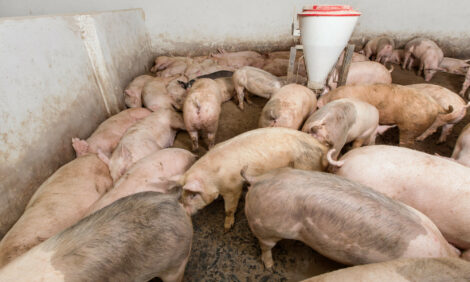



Ring Trials Pathogen Detection in Oral Fluid by Serology or PCR in a European Informal Network
Members of 18 diagnostic laboratories from 13 EU countries, regrouped in an informal ‘European network of diagnostic laboratories on swine oral fluid’, performed two ring trials on the detection of PRRSV, PCV2 and SIV, coordinated by Labocea (France) and funded by Merial, write L. Mieli et al.First ring trial: field samples of oral fluid (OF)
Phase 1 compared the capability of each network member to perform common and separate analytical methods for the detection of PRRSV, PCV2 or SIV in shared samples of native (i.e. unspiked, field-collected OF.
This ring trial was organised by Merial and Labocea, which prepared and froze multiple batches of four sample panels (one per test), with 6 samples per panel.
Each batch was simultaneously sent to all participating laboratories (n=11). They performed four tests: a semi-quantitative ELISA specific for anti-PCV2 antibodies (Ab), a qualitative ELISA specific for anti-PRRSV Ab, a qualitative RT-PCR method specific for the genome of SIV and a qualitative RT-PCR method specific for PRRSV genome.
Results, collected and processed by Labocea were found to be satisfactory for serology (concordant results in 7/9 laboratories for PCV2 and 7/10 for PRRS), pointing at a good potential for serology standardisation on native OF in the network. Results were highly heterogeneous for the RT-PCR methods.
Second ring trial: PRRSV-spiked samples
Phase 2 focused on the detection of PRRSV by the RT-PCR methods and using sera and OF collected in a Specific Pathogen Free farm, spiked with two different EU-PRRSV strains. For this second ring trial, OF samples were pooled and centrifuged at Labocea, and were sent frozen (along with the sera panels) to the participating laboratories (n=14).
They performed the spiking, and ran two different RT-PCR methods: the method they routinely used for diagnostic purposes, and a common ‘troubleshooting’ method, kindly provided by Thermofischer.
Results were collected and processed by Labocea. At the 10-2 spike dilution, all but one of the participating laboratories detected the sera and OF spiked with either PRRSV strain, by both methods.
One laboratory failed to detect one strain (but detected the other). For further dilution values, high differences were observed between the individual laboratories (up to two orders of magnitude).
These results may explain the discrepancies observed between laboratories in ring trial #1. They also demonstrate that a coordinated and multidisciplinary work is feasible with a large number of laboratories, to improve the reliability of analytical results in Europe.
Presented at the 2015 European Symposium of Porcine Health Management
November 2015








